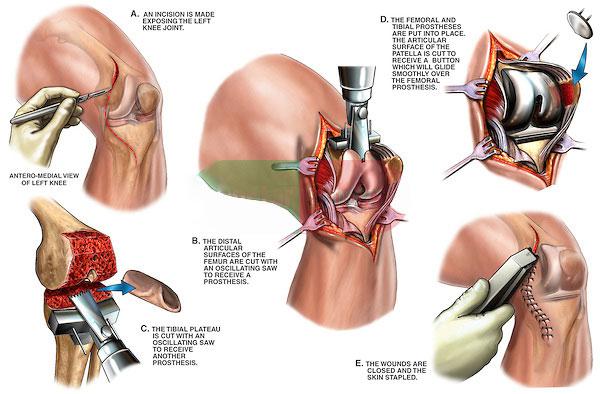Knee Replacement
Knee Replacement
Knee Replacement
Knee Replacement
Knee replacement surgery — also known as knee arthroplasty _ can help relieve pain and restore function in severely diseased knee joints. The procedure involves cutting away damaged bone and cartilage from your thighbone, shinbone and kneecap and replacing it with an artificial joint (prosthesis) made of metal alloys, high-grade plastics and polymers.
In determining whether a knee replacement is right for you, an orthopaedic surgeon assesses your knee's range of motion, stability and strength. X-rays help determine the extent of damage.
Your doctor can choose from a variety of knee replacement prostheses and surgical techniques, considering your age, weight, activity level, knee size and shape, and overall health.
Complications After Surgery
Knee replacement surgery, like any surgery, carries risks. They include:
• Infection
• Blood clots in the leg vein or lungs
• Heart attack
• Stroke
• Nerve damage
• Signs of infection
Notify your doctor immediately if you notice:
• Fever greater than 100 F (37.8 C)
• Shaking chills
• Drainage from the surgical site
• Increasing redness, tenderness, swelling and pain in the knee
An infected knee replacement usually requires surgery to remove the artificial parts and antibiotics to kill the bacteria. After the infection is cleared, another surgery is performed to install a new knee.

